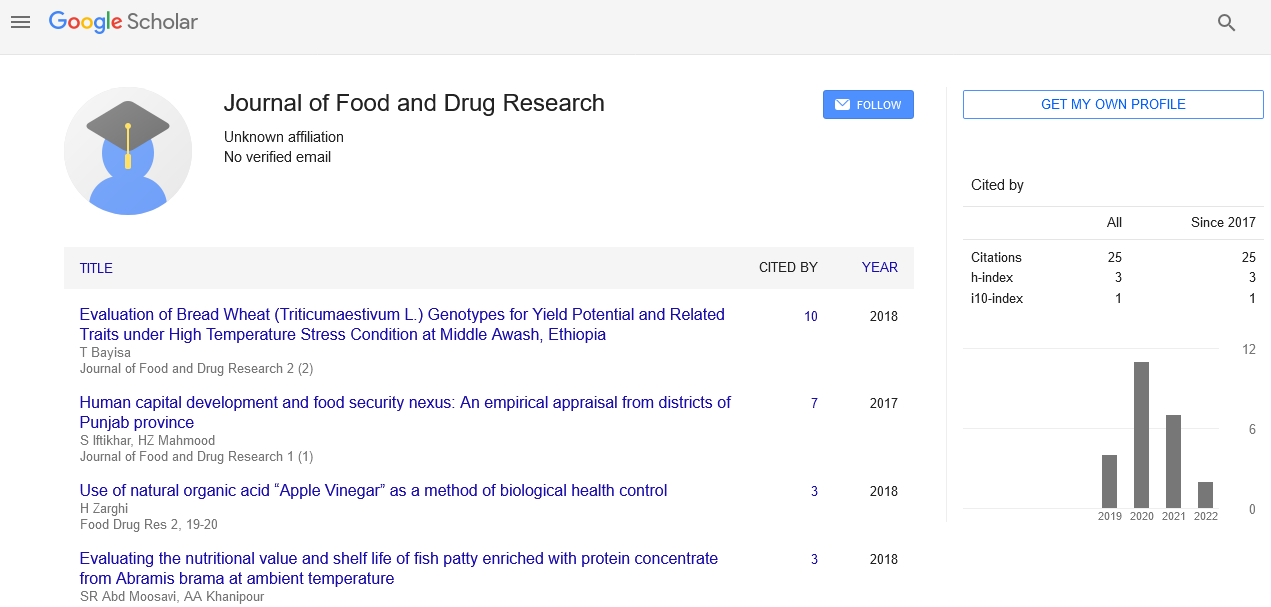Food fermentations that involve redox reactions
Received: 14-Oct-2022, Manuscript No. PULJFDR-22-5732; Editor assigned: 16-Oct-2022, Pre QC No. PULJFDR-22-5732 (PQ); Accepted Date: Oct 25, 2022; Reviewed: 20-Oct-2022 QC No. PULJFDR-22-5732 (Q); Revised: 22-Oct-2022, Manuscript No. PULJFDR-22-5732 (R); Published: 27-Oct-2022, DOI: 10.37532/puljfdr.22.6(5).1.
Citation: Brown P. Food fermentations that involve redox reactions. J. Food Drug Res. 2022; 6(5):01.
This open-access article is distributed under the terms of the Creative Commons Attribution Non-Commercial License (CC BY-NC) (http://creativecommons.org/licenses/by-nc/4.0/), which permits reuse, distribution and reproduction of the article, provided that the original work is properly cited and the reuse is restricted to noncommercial purposes. For commercial reuse, contact reprints@pulsus.com
Abstract
Food fermentations are frequently carried out without the active addition of air. The redox processes during the fermentation must be in balance because oxygen will only be momentarily available, with the probable exception of surface bacteria. The early stages of the routes for the production of ATP from carbohydrate fermentation often contain oxidative processes, whereas a variety of other reactions are used as compensating reductions. A large portion of the differences across food fermentations can be attributed to the various pathways and electron acceptors that microbes employ to balance the first oxidative processes. his study provides a brief overview of the methods used by microbes in food fermentations to locate the most suitable electron acceptors, enabling them to maintain a balance in their metabolic processes. The variety of utilised acceptors produces a variety of metabolic end products, which in turn influence the variety of taste, colour, texture, and shelf life. The review comes to the conclusion that these reactions are still little understood and that they provide an exciting topic for basic research as well as a fruitful field for product development through a more deliberate utilisation of the redox characteristics of strains used to create food cultures.
Key Words
Food fermentations; ATP; Carbohydrate fermentation; Oxidative processes; Metabolic processes
Introduction
Since ages, fermented foods have been made without any Sunderstanding of microbiology, and even now, our understanding of the helpful bacteria is still relatively restricted. A small number of the more than 200 species of microorganisms that have been used in food fermentations in the past are grown and sold as starting cultures. Alcoholic beverages (beer and wine), fermented doughs, vinegar, fermented dairy products (cheese, yoghurt, and fermented milks), fermented soy (miso, tempeh, natto, and soy sauce), fermented fish, fermented meat, fermented coffee, and fermented chocolate are among the primary categories of fermented food. As opposed to respiration, fermentation was referred to as life without air. Nevertheless, the aforementioned list of microbes found in fermented foods is based on a less rigid definition and includes some aerobic microbial processes as vinegar generation and surface ripening of cheese and sausages. However, the bulk of food fermentations don't have an air supply. It may seem strange that restricting the microbial metabolism by removing air would result in a greater variety of tastes and textures being created by the cultures. Anaerobic metabolisms generate a variety of end products, including as ethanol, acetoin, diacetyl, acetaldehyde, lactic acid, acetic acid, and other acids in addition to water and CO2. Respiratory metabolisms primarily create CO2 and water as end products. Redox reactions are chemical processes in which electrons are transferred between molecules, with the donor molecule being oxidised and the recipient molecule being reduced. Although the two responses must occur simultaneously, they can be separated in a galvanic cell and happen at various electrodes. The state where electrons are obtained or lost at equal rates is known as the standard potential E0 (measured in volts, V) for each process. A redox electrode can be used to detect an aqueous system's Oxidation/Reduction Potential (ORP, Eh). The likelihood that a molecule will accept or give up an electron depends on the value of Eh in relation to E0 (to oxidise or to be oxidized). Given the volume, variety of raw materials, and species present in food fermentations, Lactic Acid Bacteria (LAB) play a significant role. The acidification activity has traditionally been the main performance criterion for starting cultures for the food industry. The second factor was robustness to phage infections, which is another indication of acidification's dependability. Eh has received less attention than ph because texture and flavour have been given less significance. This review will focus on redox reactions in LAB, and the conclusion will be that greater understanding of redox reactions can significantly encourage creativity in food fermentations when creating starter cultures for food fermentation.






